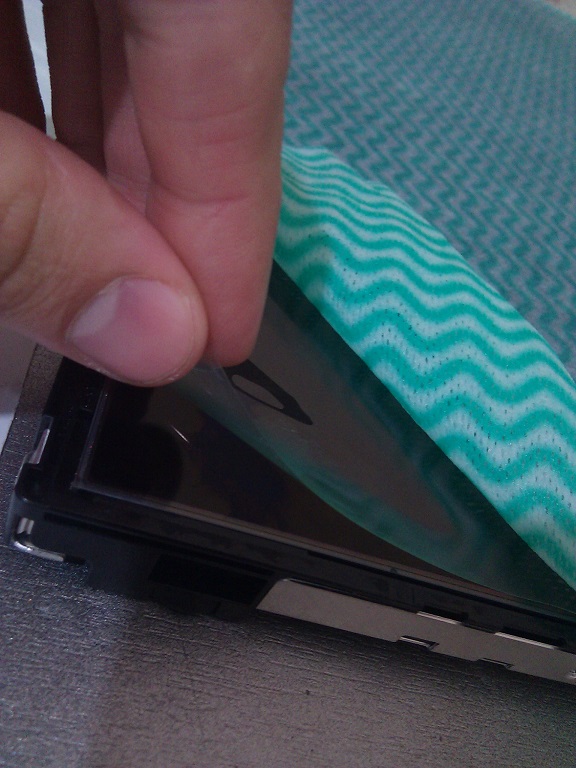Sunday's note on practical experience in remaking a monitor from matte to glossy

A little backstory:
Once, due to my squint and incontinence, I scratched the monitor screen of my dorm roommate. Max, you couldn’t buy a monitor with a DVI output? !!! Eh ... okay.

In general, this is how I got the ASUS VW193D-B. The scratch was small, practically did not interfere with use. A couple of years passed, I bought a monitor of a larger diagonal, and this one went to the closet for a well-deserved vacation, because to sell it for any meaningful money is already unrealistic. Well, an extra monitor can always come in handy on the farm.
Once I read an article by the haberraiser WingedBoar , where he described his experience of removing anti-reflective coating from a monitor. habrahabr.ru/post/146644
I was still interested in this, but did not dare. I was afraid to spoil the monitor. As it turned out, there is nothing supernatural in this.
So, if you are interested, I’m ready to share what and how it turned out under the cut.
You’ll probably not learn anything new if you read the WingedBoar article earlier .
And why then all this? When I doubt something, I feel calmer from the fact that someone has already done so. Sometimes, after reading about the same thing from different sources, it becomes more clear and even calmer ... In general, to the point.
Looking ahead, I’ll say that the scratch from the monitor has completely disappeared ...
First of all, we take it apart. I will not dwell in detail on this stage - if that is what, look for a manual for analyzing specifically your model.

Yes ... Another moment - take a photo as you parse - all connections, plugs, so that later, when assembling, do not fall into a stupor, trying to figure out where to stick it.


Disconnect everything, leave only the matrix.

Take rags, cover the matrix on top. Wet with water. The goal is for the rag to be moist, but the water does not flow under the matrix.

Let's go about our business. Periodically add water to the rag, if necessary.
WingedBoar advises to withstand 4 hours to make the film come off easily. I had 2 hours. Here, apparently, it depends on the specific model. But wait a little longer obviously will not be superfluous.


Next, we try to pick up the matte film at the edge of the matrix with a fingernail. Did not work out? Soak on.
Gone? Comes together in a single piece without much resistance? Excellent - pull. Feels like this is how to remove the protective film from the touchscreen of the phone / tablet. I was afraid that I would remove the polarizer, but, as WingedBoar wrote , you immediately realize that you are shooting the matte film, and not something else.

All. Remove glue residue, if any. In my case, he was not there. I just wiped the matrix with a clean cloth.
Reverse assembly.
We check that the matrix is dry, there are no smudges of water anywhere. I would advise you to wait at least night if you are not sure. So, just in case.
I was impatient to quickly see the result, so making sure that everything was dry, I immediately started to reassemble.
Easy excitement. Tests, just in case, were carried out in front of the open balcony door, in which case (fire, smoke, alien attack, etc.) put up a monitor and take measures.

And, lo and behold !!! Everything works!!!
So, I got a glossy monitor!

As one of my good friends told me (by the way, also Maxim),
“it’s strange - everyone takes matte ones, and you make glossy matte ones.
against the system. ”
So, each has its own truth and the debate is better - gloss or mat, I suggest leaving it behind the scenes. Everyone chooses what is closer to him.

By the way, in this way it is quite possible to save the monitor from shallow scratches, and other defects, if the matrix itself is not touched. Upon completion, you can pick up and stick on a new matte film.
Thank you, good luck to everyone!
